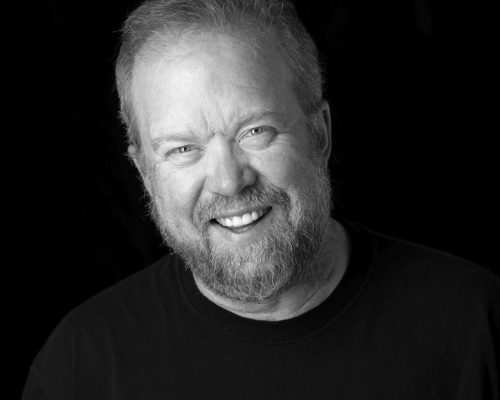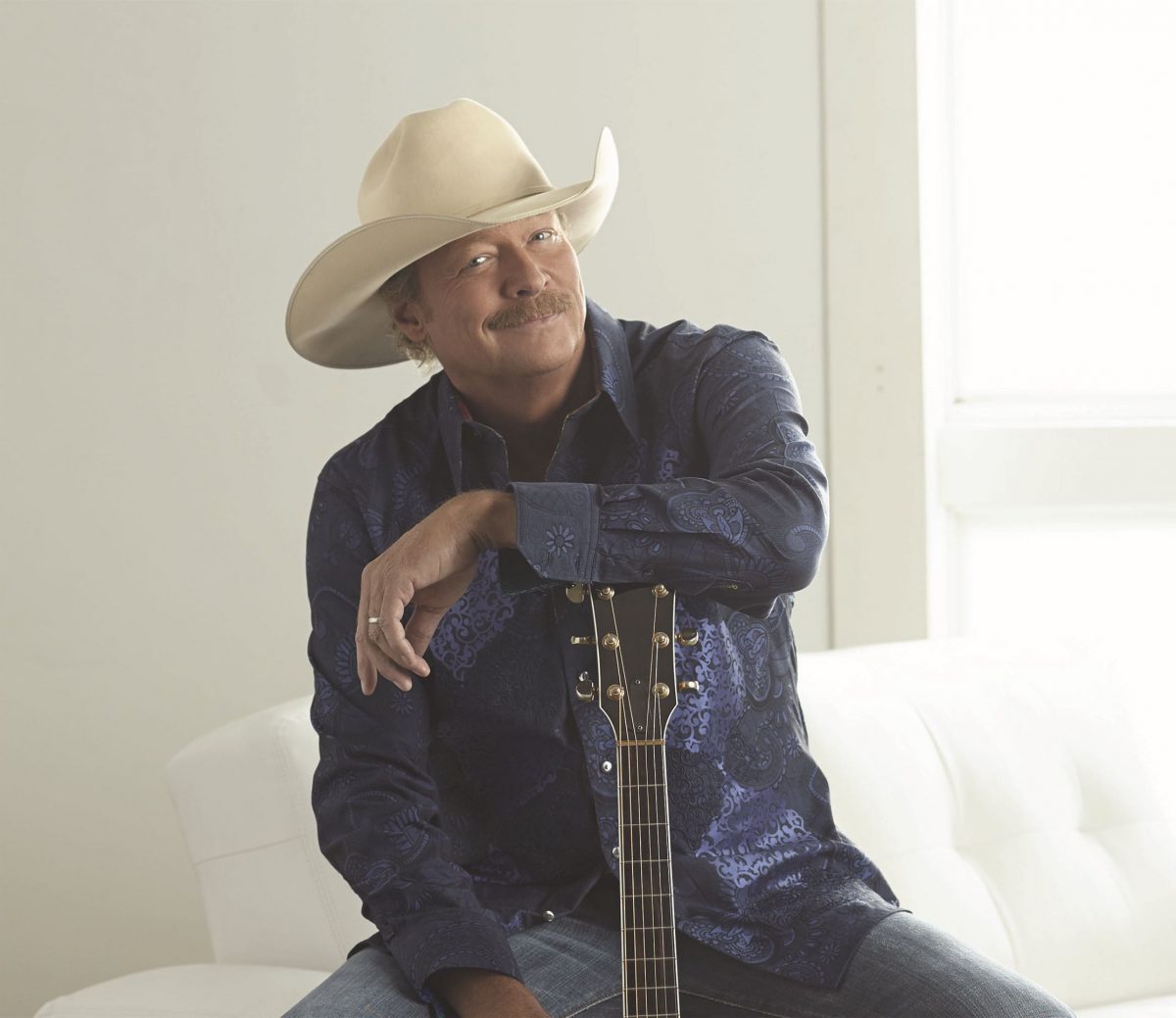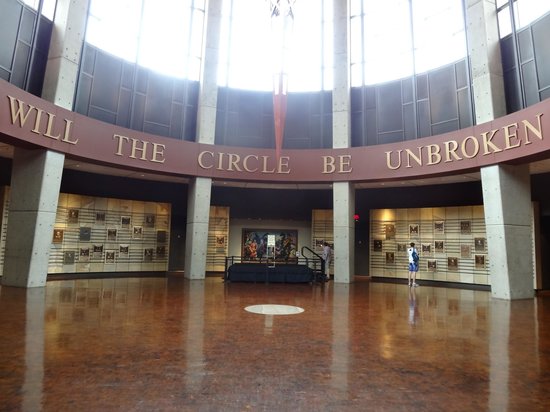The Country Music Association (CMA) recently announced details of the 2017 inductees into the Country Music Hall of Fame. The late Jerry Reed, an ace guitarist, songwriter, singer, entertainer and actor, will be inducted in the Veterans Era Artist category. Alan Jackson, one of the Class of 1989, who along with Garth Brooks and Clint Black, spearheaded the Neo-Traditionalist country movement of the early 1990s, will be inducted in the Modern Era Artist category.
The lesser-known, but equally important, Don Schlitz, will be inducted in the Songwriter category, which is awarded every third year in rotation with the Recording and/or Touring Musician Active Prior to 1980 and Non-Performer categories. Schiltz, possibly best-known for penning The Gambler, a massive international hit for Kenny Rogers in 1978, has also penned dozens more hits for the Judds, Keith Whitley, Randy Travis, Mary Chapin Carpenter, Alison Krauss, Ronan Keating, Reba McEntire and George Strait.
 Songwriting great Don Schlitz – Pic credit: CMA
Songwriting great Don Schlitz – Pic credit: CMA
Alan Jackson, the most creatively consistent honky-tonker of the neo-traditional country singers of the 1990s, built his career gradually and sensibly, writing and performing some of the most authentic sounding country music to be heard within the mainstream country format. A skilled songwriter, his most notable successes include Here In the Real World, Don’t Rock the Jukebox, Chattahoochee, Gone Country and his moving 9/11 song Where Were You (When the World Stopped Turning). He has charted more than 30 No. 1 hits, sold nearly 60 million albums, and is among country music’s most decorated and respected figures, with more than 150 awards.

Honky Tonk legend Alan Jackson
Ace guitarist Jerry Reed first came to the forefront in the mid-1960s with his fiery guitar work and songs like Guitar Man and US Male (both covered by Elvis Presley with Reed playing guitar) and Alabama Wild Man. He penned A Thing Called Love, a Johnny Cash hit and later branched out into acting, alongside Burt Reynolds in the Smokey & The Bandit films. His acting never detracted from his singing career, scoring later hits with East Bound And Down, She Got the Goldmine (I Got The Shaft) and The Bird.
The Country Music Hall of Fame was established by the CMA in 1961 and was the first Hall of Fame established for a specific music genre. Among the initial inductees were Hank Williams, Jimmie Rodgers, Fred Rose and Roy Acuff. Since then the membership of the Hall of Fame has grown to 133 and includes such familiar names as Dolly Parton, Don Williams, Emmylou Harris, Brenda Lee, Glen Campbell, Kris Kristofferson and the less familiar Grady Martin (session guitarist), DeFord Bailey (hillbilly harmonica player), Homer & Jethro (comedy duo) and Uncle Dave Macon.
The CMA manages and conducts the annual election of members into the Hall of Fame while the Country Music Foundation operates the Country Music Hall of Fame and Museum, a purpose-built building in downtown Nashville. If you ever visit Nashville, the Hall of Fame is a must destination. It not only displays plaques for all 133 Hall of Fame members, but also tells the history of country music from the first commercial recordings of the 1920s, through to the current superstars of today.

The memorabilia on display is quite incredible and there’s also the opportunity to hear classic recordings covering the last 90 years. There are special displays spotlighting certain performers and country music styles, which are changed on a regular basis. The behind-the-scenes archives at the Hall of Fame are most extensive, and a boon for the scholar or anyone who wishes to research any aspect of country music.
A major supporter and financial contributor to the Hall of Fame is country-pop star Taylor Swift. In 2012, she donated $4 million to the Hall of Fame to endow the education centre, which includes three classrooms, a hands-on instrument room and a children’s exhibit gallery for interactive exhibits, all spread over two floors. According to Swift’s website, her donation to the centre stands as the largest individual artist gift ever donated to the Country Music Hall of Fame, where the singer signed her first record contract as a teenager.
…complaints and criticism…
As always, when new members to the Hall of Fame are announced, there are complaints and criticism about those performers, musicians and executives that have been overlooked. Some years ago, the CMA did a ‘catch-up’ with multiple inductees in one year, but despite that, there are still literally dozens of valid names that should have been added to the Hall of Fame.
On April 7th 2017, the Rock and Roll Hall of Fame in Cleveland inducted six new members (ELO, Joan Baez, Journey, Pearl Jam, Tupac Shakur and Yes), bringing the membership total to 317. That is almost three times the number inducted into the Country Music Hall of Fame, which was set up some 24 years earlier than the Rock and Roll Hall of Fame, so I believe that the criticism of the Country Music Hall of Fame membership and the whole selection method is more than justified.
The number of performers, songwriters, producers, musicians and executives that should have been inducted into the Country Music Hall of Fame years ago grows steadily, and by maintaining the level of only three new members each year, is unlikely to change things. The choice of inductees is made by ‘a secret group of experts’ selected by the CMA. I believe that the CMA has done a fantastic job in promoting country music since its formation in 1958, but having said that, I also strongly believe that the organisation places too much emphasis on commercial success at the cost of country music’s rich rural heritage.
For years, the CMA has ignored such sub-genres as bluegrass, Cajun, western swing, and country-rock and championed those acts that crossover to multi-market pop success. This could mean that influential performers like Doc Watson, Chubby Wise, Del McCoury, Jimmy C Newman, Doug Kershaw, the Hackberry Ramblers, Wayne Hancock, Dale Watson and even Alison Krauss, who have all played a major role in the evolution of country music, could be denied their elevation to the Country Music Hall of Fame.
The list of mainstream country performers that have so far been denied their rightful induction is too lengthy to list here, but I will mention just a few, to give you an idea of some of the blatant omissions that the CMA has made over the years. Firstly, with their strong connections to the UK, I’m sure that many will be somewhat amazed to discover neither Slim Whitman or George Hamilton IV are in the Hall of Fame. Both during their lengthy careers, did much to popularise country music not just in the UK, but around the world.
George was dubbed the International Ambassador of Country Music and was the first to take country music behind the Iron Curtain. Maybe they’ve been passed over because in the eyes of Nashville industry folks, they didn’t enjoy such a high Stateside profile as some of the other performers in the Hall of Fame. Yet, for years, these same industry folk, guided by the CMA hierarchy, have paid lip-service to making country music more popular in the international market. So why not recognise and honour the two performers that actually pioneered taking country music around the world?
Forgetting is the death of history
In addition to Slim and George, off the top of my head I could list a couple of dozen equally deserving performers, musicians and executives that have so far been passed over. Even to me, with my 50-plus years of involvement in country music, I was taken aback to discover that singers Gene Watson, Wanda Jackson, Elton Britt, Lynn Anderson and Tanya Tucker have yet to be inducted. Then there’s songwriters Bob McDill, John D Loudermilk and Max D Barnes, or session musicians Bob Moore, Pete Drake and Jerry Kennedy, not to mention important behind-the-scenes executives. In fact, the more I think and look at all the worthy omissions, the ‘angrier’ I get.
Before I receive irate criticism, let me add immediately that I have absolutely no problem with the three choices named this year or the previous 130 Hall of Fame inductees. Each, in their own way, has made significant contributions to the growth of country music over the years and all deserve their long overdue recognition. My argument is that it’s about time the CMA and the Country Music Foundation, collectively got their act together and bestowed Hall of Fame recognition to the many well-deserving and long overlooked individuals that have been ignored or passed over during the past six decades since the Country Music Hall of Fame was first established.
Forgetting is the death of history, which is why the act of remembrance becomes such a lifesaving deed, and if the CMA was really serious about paying tribute to the rich heritage of country music, it would honour more than just a couple of yesteryear’s veteran country acts each year. Many are dying before being inducted into the Hall of Fame. Induction into the Hall of Fame is regarded as the ultimate recognition of outstanding and indelible contributions to the advancement of Country Music, and it should not be a posthumous honour.
Artists, performers and industry personnel who have dedicated their lives to the rich heritage of country music, wherever possible, should have this high honour bestowed upon them while they are still alive.
By Alan Cackett





